Below are a number of rare photographs of the Iranian army ranging from (circa) 1921-1941. The acquisition of heavy military equipment (as displayed below) and the formation of more modern units based on armored vehicles in the 1921-1941 period is discussed in Farrokh’s third text Iran at War: 1500-1988 in pages 264-266 (accompanying footnotes in pages 443-444).
Iran built up its forces of armored combat vehicles and tanks during the interwar years between World War One and World War Two. Among the first wheeled military vehicles to formally enter service with the Iranian army were the sturdy old British Rolls Royce India (1921) Pattern armored cars armed with Vickers machine guns.
Iran’s first half-track vehicles were the French-built Citroen (half-tracked) vehicles. Augmenting Iran’s non-tracked vehicles were the more potent American made LaFrance TK-6 armored car armed with a 37cm main gun and two machine guns of unknown caliber. It is still not clear how many TK-6 types were in Iranian service. Iran also made a special order of Marmon-Herrington armored cars which were delivered by the mid-1930s. Another Iranian armored car was the M-H. At the eve of the Second World War, Iran possessed a force of 102 non-tank armored vehicles. The first tanks (fully tracked – not half tracks like the Citroen cited earlier) to arrive into Iran were the French FT-17 light tanks in 1925. These were armed with the 7.92 mm machine gun. The FT-17 was followed in delivery to Iran by the US-made Marmon Herrington which was also armed with machine guns. By the onset of World War Two, Iran had less than 200 tanks, with one of the most modern of these being TNH light tanks armed with the 37mm gun. The TNH was highly popular among the Iranian armored corps as well as the Iranian public, who were impressed by these during army parades. Fifty TNH light tanks and fifty AH-IV tankettes equipped the first and second armored divisions (each equipped with 25 TNH and 25 AH-IV [discussed below] respectively). Up to 300 more of these had been ordered by Iran but these never arrived after the Anglo-Soviet invasion of Iran in August 1941. Another type of the most modern tanks in the Iranian army inventory before World War Two was the Czech built AH–IV. The AH-IV like all orders delivered by the Czechs to Iran was built specifically to satisfy Iranian specifications. The tanks themselves were manufactured by the Skoda Company with the machine guns built by Skoda’s competitor, Zbrojovka Brno. Iran was to also use large numbers of Brno rifles which were manufactured locally under license (For more on the Brno click here…). Despite the rise of the armored corps, cavalry remained Iran’s primary weapon of rapid attack and maneuver. This was because Iran’s armored forces had not yet been able to assume the primary role in such operations. For this to evolve, the Iranian army needed to form a professional cadre of officers cognizant of the latest methods of European armored warfare. Iran did have numbers of such officers trained in European schools, but these could not advance to higher ranks due to overall problems in the upper echelons of command.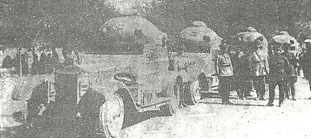 Very rare (if weathered) photograph of the four Rolls Royce armored cars in Iranian army service delivered to Iran in 1924. Note the rounded copula. The vehicle was armed with the Vickers .303 machine gun. The sturdy Rolls Royce may have been used by the Iranian army to disarm tribal rebels in Iran’s south and southwest (Picture Source: Matofi, A., 1999, Tarikh-e-Chahar Hezar Sal-e Artesh-e Iran: Az Tamadon-e Elam ta 1320 Khorsheedi, Jang-e- Iran va Araqh
Very rare (if weathered) photograph of the four Rolls Royce armored cars in Iranian army service delivered to Iran in 1924. Note the rounded copula. The vehicle was armed with the Vickers .303 machine gun. The sturdy Rolls Royce may have been used by the Iranian army to disarm tribal rebels in Iran’s south and southwest (Picture Source: Matofi, A., 1999, Tarikh-e-Chahar Hezar Sal-e Artesh-e Iran: Az Tamadon-e Elam ta 1320 Khorsheedi, Jang-e- Iran va Araqh Iranian army personnel on maneuvers with what appear to be French made Citroen half-tracks. According to Matofi, these were the first half-tracks to enter service with the Iranian army in 1925 (Picture Source: Matofi, A., 1999, Tarikh-e-Chahar Hezar Sal-e Artesh-e Iran: Az Tamadon-e Elam ta 1320 Khorsheedi, Jang-e- Iran va Araqh [The 4000 Year History of the Army of Iran: From the Elamite Civilization to 1941, the Iran-Iraq War]. Tehran:Entesharat-e Iman, pp.1045).
Iranian army personnel on maneuvers with what appear to be French made Citroen half-tracks. According to Matofi, these were the first half-tracks to enter service with the Iranian army in 1925 (Picture Source: Matofi, A., 1999, Tarikh-e-Chahar Hezar Sal-e Artesh-e Iran: Az Tamadon-e Elam ta 1320 Khorsheedi, Jang-e- Iran va Araqh [The 4000 Year History of the Army of Iran: From the Elamite Civilization to 1941, the Iran-Iraq War]. Tehran:Entesharat-e Iman, pp.1045).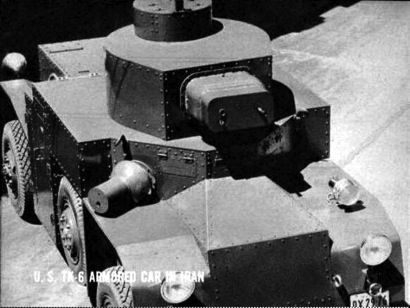 American made LaFrance TK-6 armed with a 37mm main gun and two machine guns, built for the Iranian army in 1933 (Picture Source: FSU.edu).
American made LaFrance TK-6 armed with a 37mm main gun and two machine guns, built for the Iranian army in 1933 (Picture Source: FSU.edu).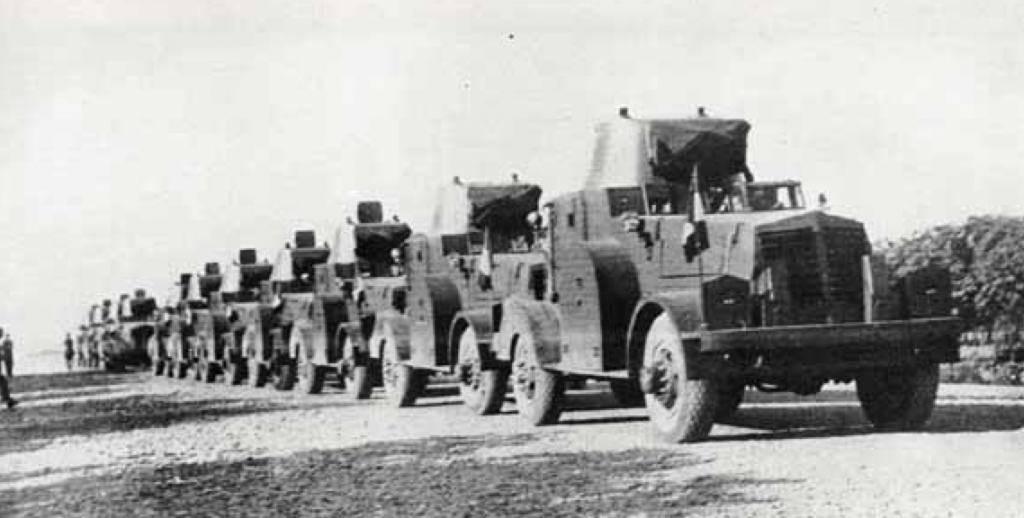 [Click to Enlarge] The Marmon-Herrington company designed the above 12 armored cars on specific requirements outlined by the Iranian army. Note that these vehicles have been equipped with a Landsverk type turret which is armed with a Bofors 37mm gun (Picture Source: Marmon-Herrington Yahoo Groups).
[Click to Enlarge] The Marmon-Herrington company designed the above 12 armored cars on specific requirements outlined by the Iranian army. Note that these vehicles have been equipped with a Landsverk type turret which is armed with a Bofors 37mm gun (Picture Source: Marmon-Herrington Yahoo Groups).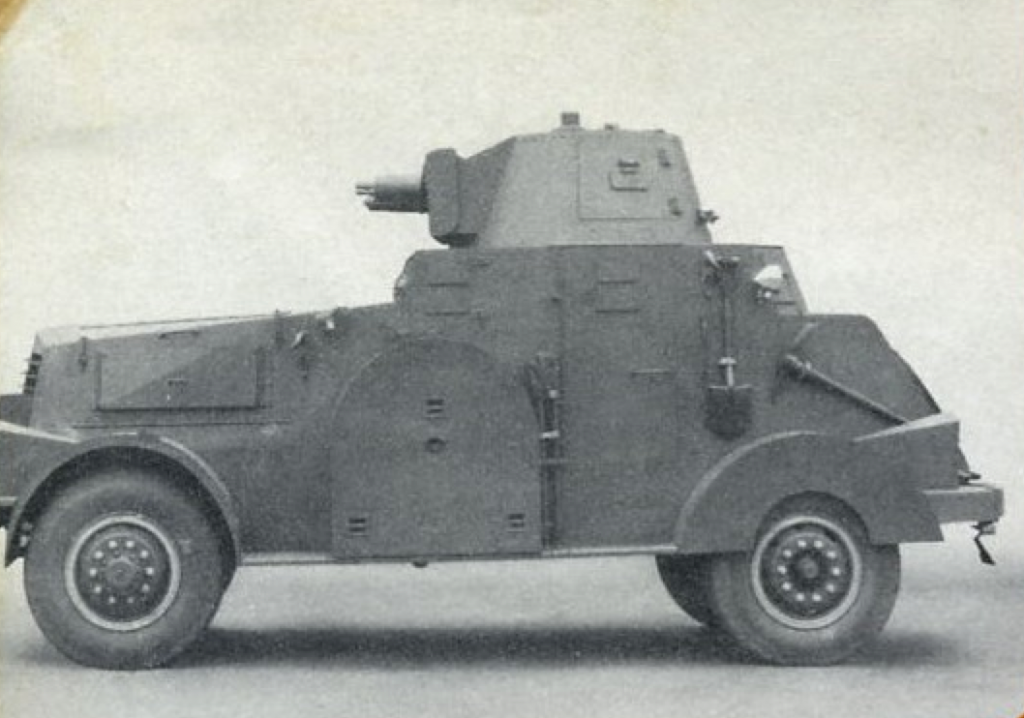 [Click to Enlarge] The M-H (1934 series) armored car in Iranian service; twelve of these served with the Iranian army (Picture Source: Network54).
[Click to Enlarge] The M-H (1934 series) armored car in Iranian service; twelve of these served with the Iranian army (Picture Source: Network54).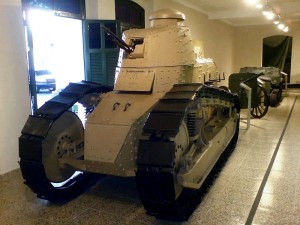 A French-made FT-17 light tank delivered to Brazil in 1921. Iran was to receive its FT-17s four years later (Picture Source: Public Domain).
A French-made FT-17 light tank delivered to Brazil in 1921. Iran was to receive its FT-17s four years later (Picture Source: Public Domain). 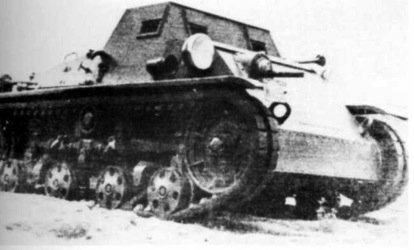 A Marmon-Herrington CTL1 (built in Indianapolis, USA) in Iranian service. Note the absence of any heavy gun on the vehicle which was armed with just a single machine gun. Iran possessed 12 of these vehicles by 1941 (Photo Source: FSU.edu).
A Marmon-Herrington CTL1 (built in Indianapolis, USA) in Iranian service. Note the absence of any heavy gun on the vehicle which was armed with just a single machine gun. Iran possessed 12 of these vehicles by 1941 (Photo Source: FSU.edu).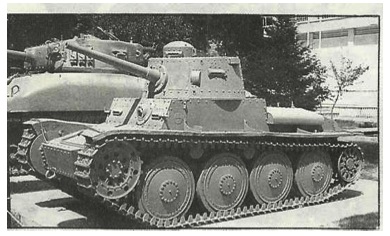 The TNH light tank of the Iranian army first delivered in 1937. Note the Sherman tank (delivered to Iran after World War Two) behind the TNH (Photo Source: (Picture Source: Matofi, A., 1999, Tarikh-e-Chahar Hezar Sal-e Artesh-e Iran: Az Tamadon-e Elam ta 1320 Khorsheedi, Jang-e- Iran va Araqh [The 4000 Year History of the Army of Iran: From the Elamite Civilization to 1941, the Iran-Iraq War]. Tehran:Entesharat-e Iman, pp.1134).
The TNH light tank of the Iranian army first delivered in 1937. Note the Sherman tank (delivered to Iran after World War Two) behind the TNH (Photo Source: (Picture Source: Matofi, A., 1999, Tarikh-e-Chahar Hezar Sal-e Artesh-e Iran: Az Tamadon-e Elam ta 1320 Khorsheedi, Jang-e- Iran va Araqh [The 4000 Year History of the Army of Iran: From the Elamite Civilization to 1941, the Iran-Iraq War]. Tehran:Entesharat-e Iman, pp.1134).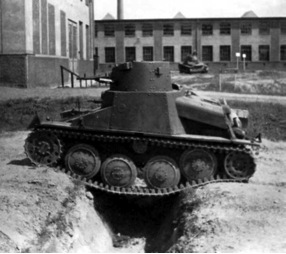 An AH-IV tankette engaged in practice drills in a Tehran barracks in the 1930s. Note the TNH light tank in the background (Photo Source: FSU.edu).
An AH-IV tankette engaged in practice drills in a Tehran barracks in the 1930s. Note the TNH light tank in the background (Photo Source: FSU.edu).



